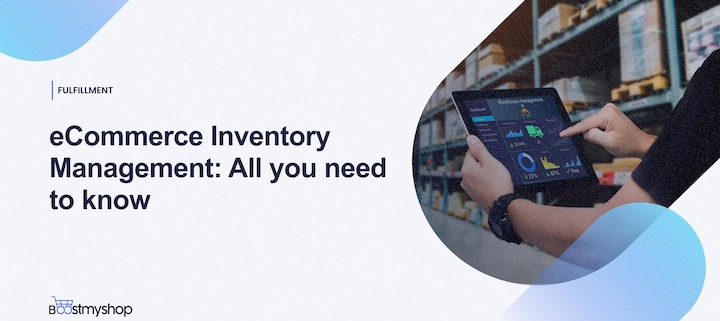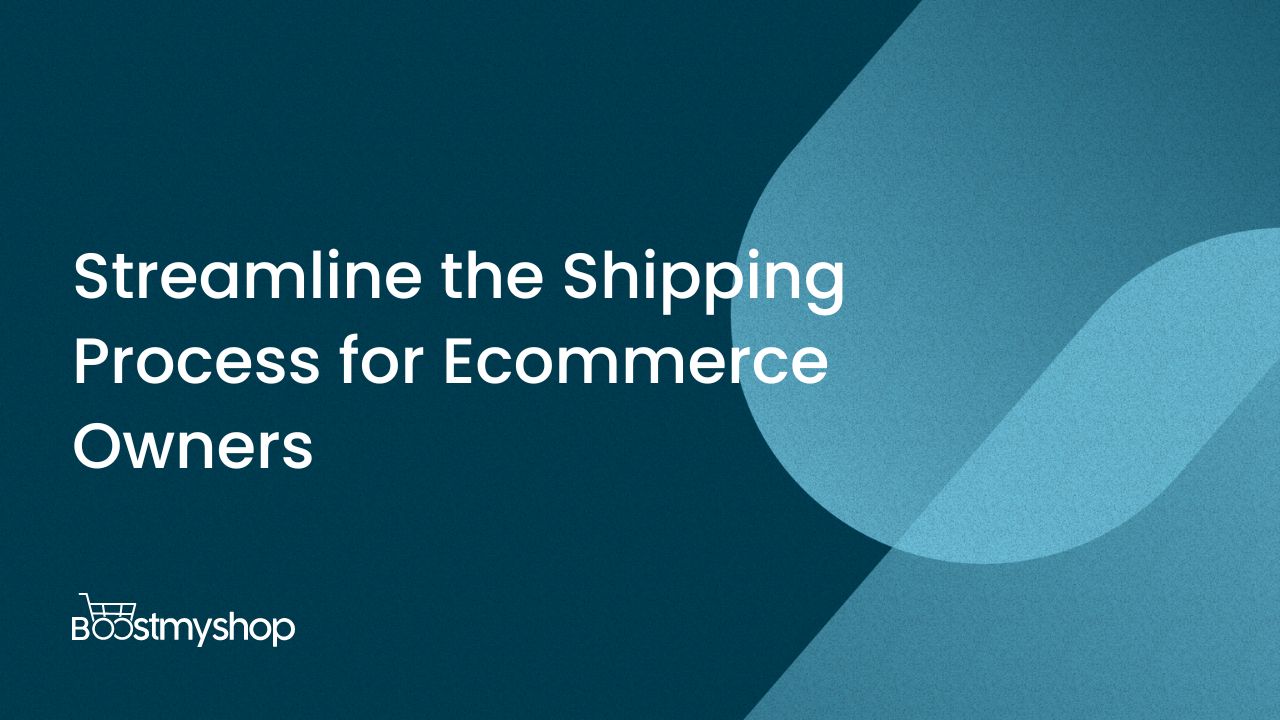eCommerce Inventory Management: All you need to know
Have you ever wondered how businesses manage their vast inventory? How do they ensure they have enough stock to meet customer demands while avoiding excessive storage costs? The answer lies in the art and science of inventory management. In this article, we’ll unravel the secrets of efficient stock control, exploring its significance and providing you with valuable insights to optimize your business operations.
What is eCommerce Inventory Management?
eCommerce inventory management is the systematic process of overseeing, controlling, and tracking a company’s stock. It involves managing the flow of goods from the point of procurement to the point of sale or consumption, ensuring the right products are available in the right quantities at the right time. Effective inventory control allows businesses to strike a balance between meeting customer demands and minimizing costs associated with excessive stock or stockouts.
The Significance of eCommerce Inventory Management
Managing inventory plays a vital role in the success of any business that deals with physical goods. Here are some key reasons why effective stock control is of utmost importance:
1. Optimizing Cash Flow: Proper inventory flow ensures that a company’s financial resources are not tied up in excess stock. By maintaining optimal inventory levels, businesses can free up capital that can be invested in other areas of growth and expansion.
2. Meeting Customer Demands: Inventory management enables businesses to fulfill customer orders promptly and efficiently. By having the right products in stock, companies can provide superior customer service, resulting in increased customer satisfaction and loyalty.
3. Reducing Costs: Effective stock control minimizes the costs associated with excess inventory, such as storage, insurance, and obsolescence. It also helps prevent stockouts, which can lead to lost sales and dissatisfied customers.
4. Streamlining Operations: Efficient management of inventory streamlines business operations by ensuring that the right amount of stock is available when and where it is needed. This optimization reduces waste, enhances productivity, and improves overall operational efficiency.
5. Forecasting and Planning: By analyzing historical data and trends, inventory management allows businesses to make informed decisions about purchasing, production, and inventory levels. Accurate forecasting and planning enable companies to adapt to changing market conditions and make proactive adjustments to optimize their inventory.
Different Inventory Management Techniques
Effective ecommerce inventory management requires employing various techniques and strategies. Here are some popular approaches to stock control:
1. Just-in-Time (JIT): The JIT approach aims to minimize inventory holding costs by receiving goods from suppliers just in time for production or customer demand. This method relies on accurate forecasting and strong supplier relationships to ensure a seamless supply chain.
2. ABC Analysis: ABC analysis categorizes inventory into three groups: A, B, and C based on their value and usage. Class A items are high-value and high-usage products, while Class C items are low-value and low-usage. This classification helps prioritize stock control efforts and allocate resources effectively.
3. First-In, First-Out (FIFO): FIFO is a method where the oldest inventory is sold or used first. This technique is particularly useful for businesses dealing with perishable goods or those subject to expiration dates. By using FIFO, companies can reduce the risk of obsolescence and ensure product freshness.
4. Economic Order Quantity (EOQ): EOQ calculates the optimal order quantity that minimizes total inventory costs. It takes into account factors such as ordering costs, holding costs, and demand rates to determine the most cost-effective quantity to order.
Advanced Inventory Management Techniques:
- Cross-Docking: Cross-docking is an organization of logistics flows where goods are distributed directly to the end consumer without going through a storage period . This approach minimizes handling and storage costs, reduces inventory holding times, and accelerates order fulfillment processes, making it particularly beneficial for fast-moving consumer goods (FMCG) industries.
- Vendor-Managed Inventory (VMI): VMI is a collaborative inventory management approach where suppliers monitor and manage their customers’ inventory levels. Suppliers are responsible for replenishing stock based on agreed-upon inventory levels and demand forecasts provided by the customer. VMI helps improve supply chain visibility, reduce stockouts, and enhance inventory accuracy while strengthening supplier-customer relationships.
- Dropshipping: Dropshipping is a retail fulfillment method where businesses don’t keep products in stock. Instead, they partner with suppliers who directly ship products to customers upon order placement. This model eliminates the need for inventory storage and reduces upfront investment risks, making it attractive for small businesses and startups. However, effective coordination with suppliers and robust order management systems are essential for successful dropshipping operations.
Common Challenges in Inventory Management:
- Demand Forecasting Errors: Inaccurate demand forecasts can result in overstocking or understocking situations, leading to excess inventory or stockouts. Factors such as seasonality, market trends, and unexpected events can complicate demand forecasting efforts. Leveraging advanced analytics, market research, and historical data analysis can help mitigate forecasting errors and improve inventory planning accuracy.
- Inventory Shrinkage and Theft: Inventory shrinkage, caused by factors such as theft, damage, or administrative errors, can significantly impact a company’s bottom line. Implementing robust security measures, conducting regular audits, and enhancing employee training on theft prevention and inventory handling procedures are essential strategies to minimize inventory shrinkage and maintain inventory accuracy.
Improve your eCommerce inventory management with Boostmyshop myFulfillment
Boostmyshop myFulfillment is a solution designed to streamline eCommerce inventory management. By seamlessly integrating with eCommerce platforms like Prestashop, Magento Shopify…. myFulfillment offers a all-in-one solution for businesses to optimize their order and warehouse management processes. With its advanced features and intuitive interface, myFulfillment empowers eCommerce businesses to efficiently manage their inventory, optimize order fulfillment, and enhance customer satisfaction. From inventory tracking and replenishment to order processing and shipping, myFulfillment provides real-time insights and automation capabilities, enabling businesses to scale operations and drive growth. Would you like to know more about Boostmyshop myFulfillment? Talk to one of our experts by booking a demo here.
Future Trends in Inventory Management:
- Blockchain Technology: Blockchain technology holds promise for revolutionizing inventory management by providing a secure, transparent, and immutable ledger for tracking products throughout the supply chain. By enabling real-time visibility and traceability of goods, blockchain can enhance inventory accuracy, streamline audits, and mitigate counterfeit and fraud risks.
- Internet of Things (IoT) Integration: IoT devices such as RFID tags, sensors, and connected devices can offer real-time monitoring and tracking of inventory movement, temperature, and humidity conditions. Integrating IoT technology with inventory management systems enables proactive inventory monitoring, predictive maintenance, and automated replenishment, driving efficiency and reducing operational costs.
Beginner Questions About Inventory Management
How often should I conduct inventory counts?
The frequency of inventory counts depends on the nature of your business and the volume of transactions. Generally, businesses perform regular physical inventory counts on a monthly or quarterly basis, but it can vary.
Is there a one-size-fits-all inventory management system?
No, there isn’t a universal inventory management system that suits every business. The optimal system depends on various factors, including the industry, size of the business, product characteristics, and supply chain complexity. It’s essential to tailor the inventory management approach to your specific needs.
How can technology help with inventory management?
Technology plays a crucial role in modern inventory management. The software and advanced analytics tools can automate processes, provide real-time insights, and facilitate data-driven decision-making. These technologies enable businesses to streamline operations and optimize stock control.
What are the consequences of poor inventory management?
Poor management of inventory can lead to a range of issues, including excess stock, stockouts, increased holding costs, missed sales opportunities, dissatisfied customers, and reduced profitability. It can also hinder cash flow, strain supplier relationships, and impede overall business performance.
Mastering the Art of Efficient Inventory Management
In conclusion, effective control of inventory is a fundamental aspect of successful business operations. By implementing proper stock control techniques, businesses can optimize cash flow, meet customer demands, reduce costs, streamline operations, and enhance forecasting and planning. Remember, there is no one-size-fits-all approach to managing inventory, and it requires continuous monitoring, analysis, and adaptation. Invest in the right tools and strategies, and unlock the potential of your business with efficient stock control.









